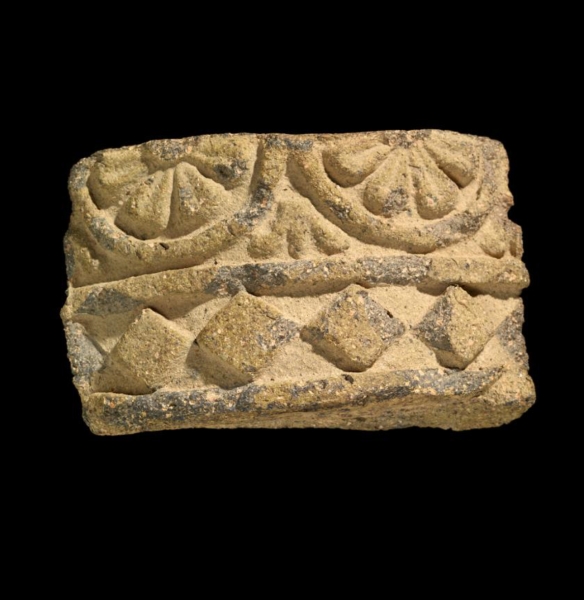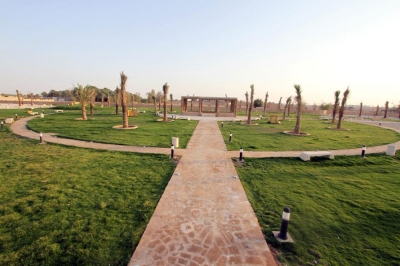

The Decorative Architectural Ornament is a rectangular-shaped architectural ornament made of terracotta (baked clay). It was discovered in al-Mabiyat Village, one of the villages in AlUla Governorate, part of al-Madinah al-Munawwarah Province in the Kingdom of Saudi Arabia. The village is located about twenty km from AlUla and approximately three hundred km from al-Madinah al-Munawwarah.
Formation of the decorative architectural ornament
The decorative architectural ornament was made from a coarse green paste, with lime added. Its exterior surface is adorned with prominent geometric and vegetal decorations. The upper part consists of two parallel, protruding friezes, with interlinked square shapes between them and two square angles connected to the frieze. At the bottom, there is a semi-circle with half a flower at its center, made up of four petals tied to a semi-circle forming the flower’s center. Between the two circles, there is a half flower made of three petals, completing a full flower when a second piece is placed.
History of the decorative architectural ornament
The history of decorative architectural ornament dates back to the Islamic period, specifically the tenth century. The discovery is part of the outcomes of archaeological surveys and excavations conducted by the Antiquities and Museums Sector in Saudi Arabia over the past years, as part of the findings by Saudi archeologists, scientific missions, and collaborative research teams across Saudi Arabia.
The decorative ornament is preserved at the Saudi National Museum in Riyadh. It is among the selected pieces featured alongside a diverse collection of other archeological discoveries from Saudi Arabia in the Saudi Archeological Masterpieces Through the Ages Exhibition.
Significance of the decorative architectural ornament
The decorative architectural ornament reflects the interest of the inhabitants of al-Mabiyat in the northwest of the Arabian Peninsula during the early Islamic period in decorating the walls of their homes with added materials, forming a variety of decorative elements. It also highlights their preference for vegetal and geometric patterns. The decorative architectural ornament is registered under number 852.
Related quizzes
Related articles
